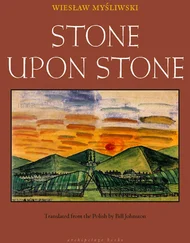II
— The sugar mill worker
in female form
— Is an empty sack
that stands on two feet.
— The female mill worker
is essentially a sack
— Of sugar without
any sugar inside.
— The sugar mill worker
in female form
— Is a sack that cannot
conserve or contain.
— She’s a sack made
just to be emptied
— Of other sacks made in her
nobody knows how.
16
— The sugar mill worker
in the form of an old man:
— Only by chance
does he get that far.
— The old mill worker
isn’t old by chance:
— He’s a young mill worker
who hurried up his age.
— The sugar mill worker
in the form of an old man:
— Having gotten that far,
he hurries to become a skeleton.
— He hurriedly grows lean
like a mud wall in ruins:
— His flesh is the mud,
his skeleton the frame.
2
— The sugar mill worker
looks like us from a distance:
— Looking closer one sees
what sets him apart.
— The sugar mill worker
up close, to a sharp eye:
— Is in all respects human
but at half the price.
— He is missing nothing
that you and I have,
down to every detail,
like any normal man.
— He’s the same, yet seems
to have been cut out
by the dull scissors
of a third-rate tailor.
7
— The sugar mill worker
looks like flesh and blood:
— Looking closer one sees
just what substance he is.
— The mill worker’s body
when actually touched
— Proves to be different,
of a thinner consistence.
— Its texture is rough
and at the same time slack,
like cheap cotton cloth
or like cotton scraps.
— Like well-worn cloths
torn and tattered
to where, in our language,
cloths become rags.
12
— The sugar mill worker
seems to be of our clay:
— Looking closer one sees
that his clay was grayer.
— The sugar mill worker
is shadowy and dim:
— He never learns to shine
like the sugar mill’s steels.
— He can’t even shine
like the duller copper
of the vats he stirs
in the smaller mills.
— He never even learns
to shine like the hoe handles
he dry polishes daily
with his sandpaper hand.
17
— The sugar mill worker
looks white or black:
— Looking closer one sees
he is actually yellow.
— The sugar mill worker
is always yellow:
— A swollen yellow,
slightly green.
— That yellowish green
without any blue,
which in anyone else
would be called disease.
— A special green,
a kind of greenish gold,
be he black or white,
a color all his own.
3
— The sugar mill worker
when he is sleeping
— Is obviously incapable
of private dreams.
— He’s missing that faraway
look of enchantment
of those who watch films
behind their eyelids.
— Behind his eyelids
there is only a darkness
where surely no dream
is being projected.
— The mill worker sleeps
in an empty cinema
— Where there is no film-dream,
nor even a screen.
8
— The sugar mill worker
when he’s not sleeping
— Looks like seaweed,
as if sleep still drenched him.
— When he’s not sleeping,
he isn’t really awake;
he merely walks
in a shallower sleep.
— He cannot escape
the marasmus that soaks him
and keeps him from rising
to a dry consciousness.
— The sugar mill worker
is never fully awake:
— He still walks in the swamps
of sleep, through their mire.
13
— The sugar mill worker
when he’s at work:
— Everything he works with
feels heavy to him.
— It’s as if his blood,
though thinner than ours,
weighed on his body
like juice when thick.
— Like sugarcane juice which,
after much cooking,
gets thicker and thicker
until it’s molasses.
— The sugar mill worker
has a heavy rhythm:
— Like the final molasses
leaving the final vat.
18
— The sugar mill worker
when not at work
— Continues to feel
that things are quite heavy.
— He is constantly crushed
by his scanty clothing,
and his nonexistent shoes
weigh heavy on his feet.
— His hand weighs heavy
lifting something or nothing,
and it weighs on him whether
it’s moving or still.
— To the sugar mill worker
his very breath is heavy:
— And he even feels the weight
of the ground he walks on.
4
— The sugar mill worker
yellowishly tinges
all that he touches
merely by touching it.
— He’s the converse of the clay
in the bleaching chambers
added to the sugar
to make it turn white.
— The sugar mill worker
bleaches in reverse:
— He penetrates, like the clay,
but turns everything dirty.
— He cleans off the cleanness
and leaves behind a smudge:
— The smudge on his shirt,
on his life, on what he touches.
9
— The sugar mill worker
yellowishly lives
among all that blue
which is always Pernambuco.
— Even against the yellow
of the canefield straw,
his yellow is still yellower,
for it reaches his morale.
— The sugar mill worker
is the quintessential yellow:
— Yellow in his body
and in his state of mind.
— This explains his calm,
which can appear as wisdom:
— But it’s not calmness at all,
it’s nothingness, inertia.
14
— The sugar mill worker
yellowishly exists
even in the colored world
he enters with cane liquor.
— In the beginning the liquor
makes him somewhat rosy
and, forgetting his yellow,
he thinks of heading south.
— In the sugar mill worker
the rose turns to purple:
— Instead of heading south,
he wants to pass away.
— Finally, inevitably,
his yellow life returns
— In the yellow bitterness
of the next day’s hangover.
19
— The sugar mill worker
yellowishly sees
the rose-colored Brazil
he lives in but doesn’t feel.
— For him the river water
is not blue but muddy,
and clouds are burlap-colored,
the grayish brown of sackcloth.
— To the sugar mill worker
the land is never a meadow:
— And each day shows him
the same faded foliage.
— And different is the death
that comes to paint his end:
— Instead of using black,
it dresses up in khaki.
5
— The sugar mill worker
when sick with fever:
— It isn’t yellow fever
but malaria, green.
— If you touch the outside
of his human-looking body:
— It feels as if his furnace
has finally fired up.
— If, however, you touch
this body on the inside:
— You see that, if a furnace,
it has no foundation.
— And if it is a sugar mill,
its fire is cold or dead:
— A mill that doesn’t refine,
that only supplies to others.
10
— The sugar mill worker
when he is dying:
— His yellow begins
to glow from inside.
— He gains a transparency
that suggests anemic crystal:
— Of which candle wax
is the best example.
— He gains the transparency
of a common candle:
— Of the candle they’ve lit
to watch over his last hour.
— The flesh of this candle
is just like his own:
— And the flame wonders why
they don’t light his too.
15
— The sugar mill worker
when carried away, dead:
— He’s one empty coffin
inside another.
— A death of emptiness
is what’s carried inside:
— And since the death is empty,
it has no insides.
— He can’t even be the contents
of the rented coffin:
— Since he is empty,
at most he’ll be the lining.
— The burial of a mill worker
is the burial of a coconut:
— A handful of wrappings
around a hollow core.
Читать дальше










